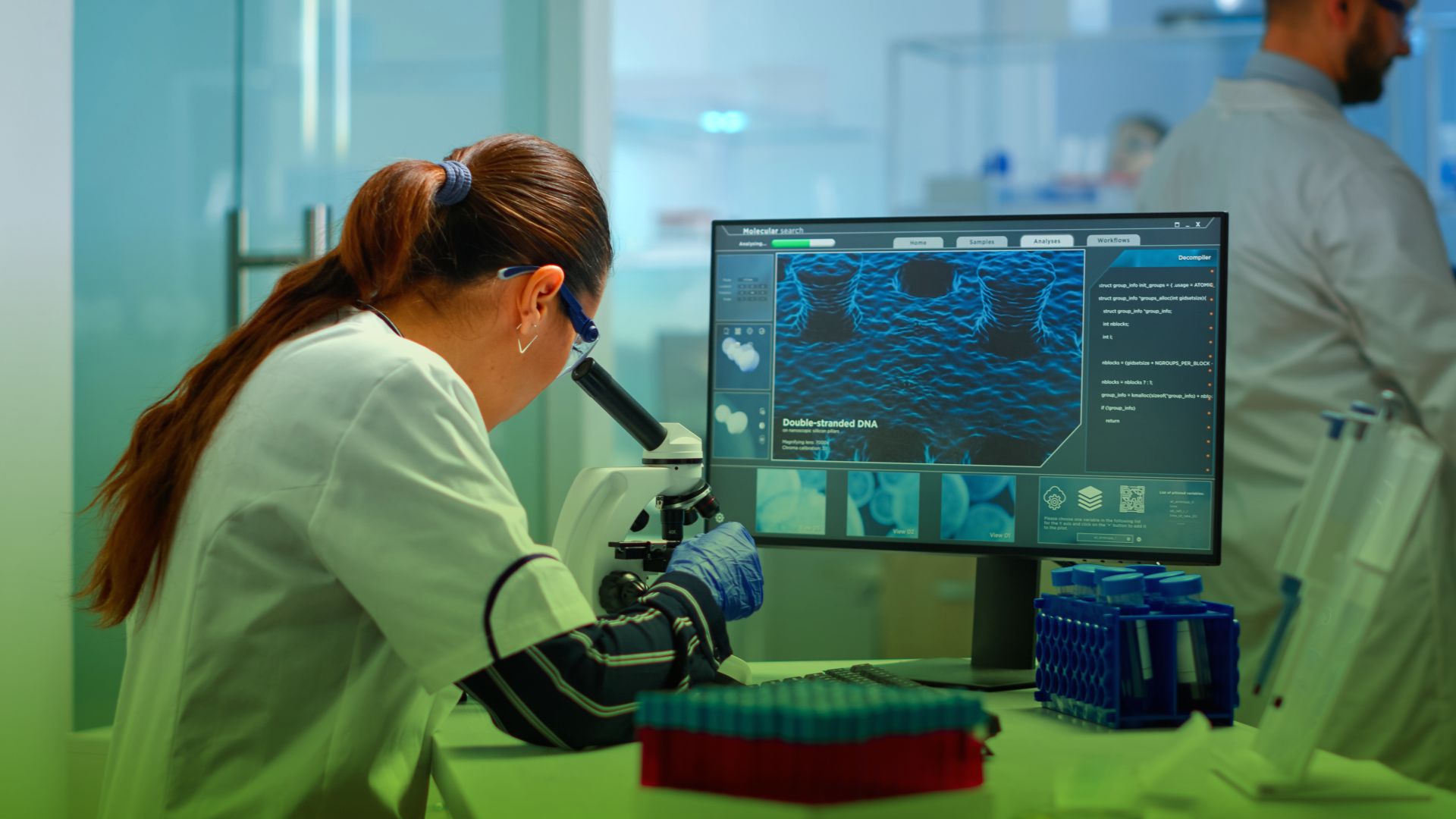BIAAS
BIOINFORMATICS AS A SERVICE
What is bioinformatics as a service?
Our service is designed for scientists who want easy access to just the right kind of bioinformatics expertise. Watch the video to learn how it works.
Omics data analysis
We analyse omics data from sequencing, array and mass-spec experiments
DNA sequencing enables identifying mutations, assembling genomes and studying genetic variation in populations of any species.
View DetailsTranscriptome-wide expression analyses are the standard approach to study molecular mechanisms in biological systems from single cells to complex microbiomes.
View DetailsSingle-cell RNA sequencing enables cataloging cells at a scale and resolution unmatched by bulk sequencing.
View DetailsEpigenomics characterizes the chromatin state down to minuscule chemical modifications.
View DetailsProteomics and metabolomics reveal the functional state of a biological system.
View DetailsDNA SEQUENCING DATA ANALYSIS
Understand the effects of genetic variation and mutations with DNA sequencing data analysis.
DNA-SEQUENCING comes in many forms. Whole-genome sequencing (WGS), whole-exome sequencing (WES) and targeted sequencing enable studying heritable and somatic DNA variants. In addition to NGS data, SNP and CGH arrays can be used to identify genetic polymorphisms and copy-number variants, respectively. Metagenomic whole-genome sequencing of microbial communities allows analyzing their compositions and functions.
We routinely analyze DNA sequence data to address research questions in both basic biology and biomedical settings. Below we present some of the typical DNA-sequencing data analyses. If you are interested to learn how we can help you to get the most out of your DNA-seq data, leave us a message and we will book you a short call with our expert.
Variant Analysis
IN MOST CASES, DNA sequencing is employed in order to identify and analyze genetic variants. These variants can be small nucleotide substitutions, insertions, deletions, copy-number alterations or structural variants. Futhermore, they may be heritable polymorphisms or somatic mutations.
Variant analysis typically starts with the quality control of raw DNA-sequencing data and aligning the sequencing reads against a reference genome. Variants that differ between the sample and public reference — or between different samples — can then be computationally identified.
A crucial part of variant analysis is annotating the detected variants. Annotations such as allele frequencies (both in-sample and in public databases such as gnomAD), predicted effects on protein structure or gene regulation and predicted pathogeneicity allow for flexible selection or ranking of variants for downstream analyses and interpretation.
Variant analysis in cancer research often focuses on identifying somatic mutations which accelerate tumorigenesis (driver mutations) or that can be used to diagnose a patient or predict their course of disease. Learn more about mutation analysis in cancer research.
Tumor Evolutionary Analysis
TUMOR EVOLUTION underpins cancer's ability to adapt under selective pressures imposed by therapies. Somatic mutations at a subclonal level can be used to reveal the clonal structure of a tumor and track it through processes such as relapse and metastasis.
Learn more about tumor clonality analysis.
Genome Assembly
FOR ORGANISMS WITH NO REFERENCE GENOMES or highly dynamic genomes, DNA-sequencing data analysis starts with assembling a genome de novo. Genome assembly benefits from deep whole-genome sequencing.
An assembled genome is annotated based on sequence homology, predicted gene sequences and, if available, RNA-sequencing data from the same organism. If annotated genomes for close relative species exist, the annotation can be improved by transferring gene information to the newly assembled genome.
The quality of an assembled genome is assessed using metrics such as N50, L50 and completness with regards to highly conserved orthologs. A new high-quality genome enables analyses into pan-genomes, population genetics and much more!
Metagenomics
METAGENOMICS OFFERS AN UNBIASED VIEW into the microbial diversity of ecological niches including samples from host organisms and soil. Using shot-gun whole-genome sequencing data, reads are assembled into contigs and assigned to species or operational taxonomic units (OTUs).
Identified species or OTUs are organized into a phylogeny and quantified. The functions brought about by individual genes or multi-gene pathways present in the sequenced community can be identified using public databases.
Note that 16S amplicon sequencing, a cost-effective alternative to metagenomic sequencing, can be used to identify species and build phylogenies, but it does not allow for high-quality functional analyses.
Population Genetics
GENOME-WIDE MEASUREMENTS of individuals sampled from related populations contain rich information on the populations’ structure, genealogy and history. Population genetic analyses of non-model organisms often begin with genome assembly and annotation, and proceed to identifying genetic polymorphisms in the sampled populations. The downstream analyses based on these polymorphisms and their allele frequencies help studying evolutionary phenomena such as speciation and adaptation.
Typical analyses involve principal component analysis, analysis of genetic variation within and between populations to identify loci affected by evolutionary selection, and analyses of population admixtures, phylogeny and demographic histories.
Genome-wide Association analysis
BIOMEDICALLY MOTIVATED POPULATION-SCALE GENETIC ANALYSES aim to identify genes and variants associated to relevant phenotypes or diseases. Apart from the few diseases which are monogenic and strongly heritable, most diseases require large, population-level sample sizes to achieve sufficient statistical power to find associations. Such genome-wide association studies (GWAS) are based on SNP-array or DNA-sequencing data from biobanks or other large repositories.
GWAS results in summary statistics on the association between each individual variant and the studied disease. In the case of polygenic diseases, individual variants may have very weak effect sizes even when the disease is strongly heritable. In such cases, polygenic risk scores (PRS) can be used to sum the effect of a large number of variants, resulting in a combined risk score with potential clinical utility.
